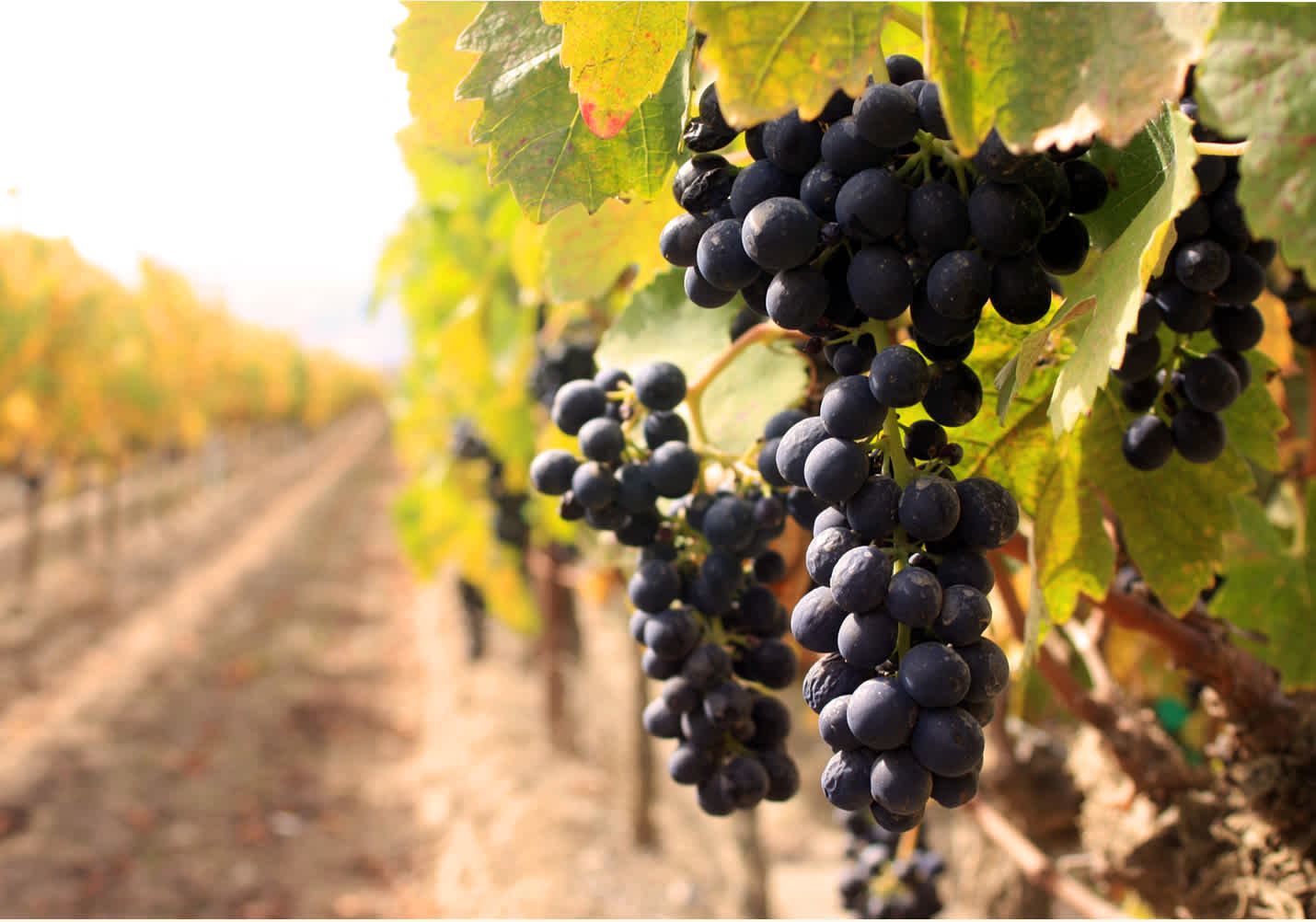What Are Tannins?
The Firstleaf guide to all things tannin
Tannins are an essential part of a balanced wine. They impart texture along with astringent (drying) and bitter sensations that play off of the fruit, acidity, alcohol, and sugars to create a final balanced wine where no one element dominates.
One way to describe the effects of tannins is that they give a wine its structure and define the mouthfeel, which is one of the reasons why highly tannic wines provide the perfect counterpoint to rich meats.
Tannins are most often found in red wines, but there are some examples of rosé, orange, and white wines that have a noticeable tannic presence.

Take Our Quiz Today
Get award-winning delicious wines from all over the world shipped straight to your door. Take the quiz to get the perfect pairings for your holiday season.
Take The Quiz TodayIN THIS ARTICLE:
Want personalized wines?
Get your first box of wines for $44.95 + free shipping.

Tannins in Food and Trees
Tannins are found throughout the plant kingdom, not just in grapes. Plants produce bitter compounds (i.e. tannins) in their bark, leaves, fruit, and seeds in an attempt to keep animals from consuming the fruit too early. Tannins and other chemical compounds inhibiting digestibility. This is why in wines made with grapes that have not been fully ripened (the winemaking term for this is physiological or phenolic ripeness) the tannins are often described as green or bitter. The tannin from the grapes carries over to the final product. But what else has tannins?
Tannins can be found in many foods we consume on a daily basis. Foods like dark chocolate, green and black teas, apple skins, pomegranate, and nuts (think about almonds or walnuts with the skin still on them) all have significant tannins present.
Scientific Definition of Tannins
A tannin is the bitter and drying part of wine, but to understand what they really are takes a little bit of explaining. Grapes are made up of many things, but the building blocks of flavor and texture for wine largely come from a group of chemical compounds called phenols. These are not equivalent to flavor in wine, tannins themselves are not flavored.
If you took a glass of wine and broke it out into constituent parts you would have, on average, mostly water, a bit of alcohol, natural sugars, a tiny bit of acid, a little bit of tannin and other phenolics, and a few chemical compounds that are the beginnings of flavor. Even the simplest of wine flavor doesn't come from one element but is the complex result of fermentation, oxygen exposure, time, and interactions with other chemical compounds.
Phenols come from the bonding of oxygen and hydrogen atoms to carbon which then binds with other proteins, amino acids, and alkaloids to create different phenolic compounds that can affect everything from taste to texture and color.
These phenolics are divided into flavonoids and non-flavonoids. Non-flavonoids include compounds like acids and resveratrol (the chemical that has been suggested to lead to human longevity) and only make up about 15% of the phenols in wine.
Flavonoids, which make up the other 85%, are much more diverse and have bigger effects on the texture and color of the wine.
So with this groundwork, we can understand that tannin is a polyphenolic compound (made up of multiple phenol groups bonded together) that come from the grape skins, stems, and seeds and directly contribute to the quality of a wine.
The Effect of Tannins
The effects of tannins on the human body are fascinating. Tannins are a plant's defensive mechanism, and condensed tannins (a specific type of tannin) react with proteins on our palate and produce an astringent effect. This is the feeling that your gums and mouth are drying out that you get when you try some red wines.
Wines with higher tannins will be more bitter and more astringent.
Fun Fact
Catechin and Epicatechin are two flavonoids that affect bitterness, astringency, and texture of a wine. And they have been found to be antioxidants which are beneficial to human health!
Tannins in Winemaking
As grapes grow throughout the spring and summer, the farmers and winemakers are evaluating how the grapes are developing, if they pick too early the tannins might be bitter, and there might not be enough sugar to convert to alcohol.
When it's time to begin the winemaking process, they pick and crush the grapes. Most white wines don't spend any time in contact with their skins or stems. Red wines spend anywhere from a few days to a few months in this process. All of the timing is based on the grape and the style of wine the winemaker is attempting to make.
This process is called maceration, and is when the polyphenols are released into the grape juice. This group of compounds include: anthocyanins (which provide color), proanthocyanidins (also called condensed tannins that release more color in the fermentation process), gallic acid, tannins, flavan-3-ols (which cause bitterness), glycosides (flavor precursors), and other various flavor compounds. These pieces react to one another as well as to time and oxygen to create a wine.
Fun Fact
Red wines contain ten times more phenolics than white wines.
If a wine is missing certain elements there are plenty of ways for winemakers to shape the final wine they are making. The aging vessel that a winemaker chooses for maceration and aging will affect the final taste. Concrete is neutral, but oak barrels can impart certain types of tannin, and the wood that makes the barrel can even lend different flavors. The tannins from French Oak are silkier and more subtle than the punch of vanilla that comes from American Oak.
If a winery can't afford oak a winemaker can use oak chips or even tannin powder to add tannins directly to the wine.
On the opposite end, if there is too much tannin a winemaker can fine or filter the wine to remove some of the bigger tannin molecules. They can even use tannic acid to clarify the wine!
It's amazing that these small building blocks combine to create flavors in ways scientists still don't fully understand.
Tannin's Effects Over Time
As we've discussed so far the building blocks of wine change and create flavors as they combine with other chemical compounds. It's true that the majority of this happens in the maceration and fermentation period, but wine is a living thing. It changes over long periods of time.
While the majority of wines are meant to be consumed in the first few years after purchase, some wines can age for a decade or more.
Tannins help bolster and add longevity because they are antioxidants, and oxygen will rapidly age a wine. Tannins change over time in a bottle of wine as well.
A wine that was harsh and bitter in youth can become subtle and well-integrated while aging. The tannins undergo a process call polymerization where the tannin molecules bond with other chemical compounds in the wine, and when they reach a certain size they become visible as sediment. This leaves the wine with tannin content that is totally different from the original wine.
Some wines are known for throwing off more sediment than others, and bottle shape can give you a little insight into serving these wines. A Bordeaux bottle has high shoulders, which can help stop sediment from getting into your glass, whereas a Burgundy bottle has sloped shoulders that would not stop sediment.
It can be helpful to allow an older bottle to stand upright for a few hours to a few days before serving to allow any sediment to fall to the bottom of the wine bottle.
A decanter is highly recommended for these older wines, you don't want to drink the sediment as it is very bitter and astringent.
What Wines Are High In Tannins
Trends over the past few decades have changed to focus on reducing the bitter and astringent qualities in certain types of wines to make them more immediately drinkable. Wines from Barolo, Bordeaux, and Rioja used to be unapproachable for many years after they were made as the tannins softened and the flavors grew in complexity.
These wines are still higher in tannins than Pinot Noir, but now even these tannic wines are made to be drunk at a much younger age. If you are looking for a wine that is rich in tannins you can generally look for Cabernet Sauvignon, Syrah, Nebbiolo, Petite Sirah, or Tannat.
IN THIS ARTICLE
Want personalized wines?
Get your first box of wines for $44.95 + free shipping.


WinePrint™ by Firstleaf
Are you looking to learn more about your wine preferences? Check out our Wine Print for an in-depth look at your personal tasting profile. Discover your favorite wines, varietals, regions, and tasting notes and get personalized recommendations wherever you are.
Learn More